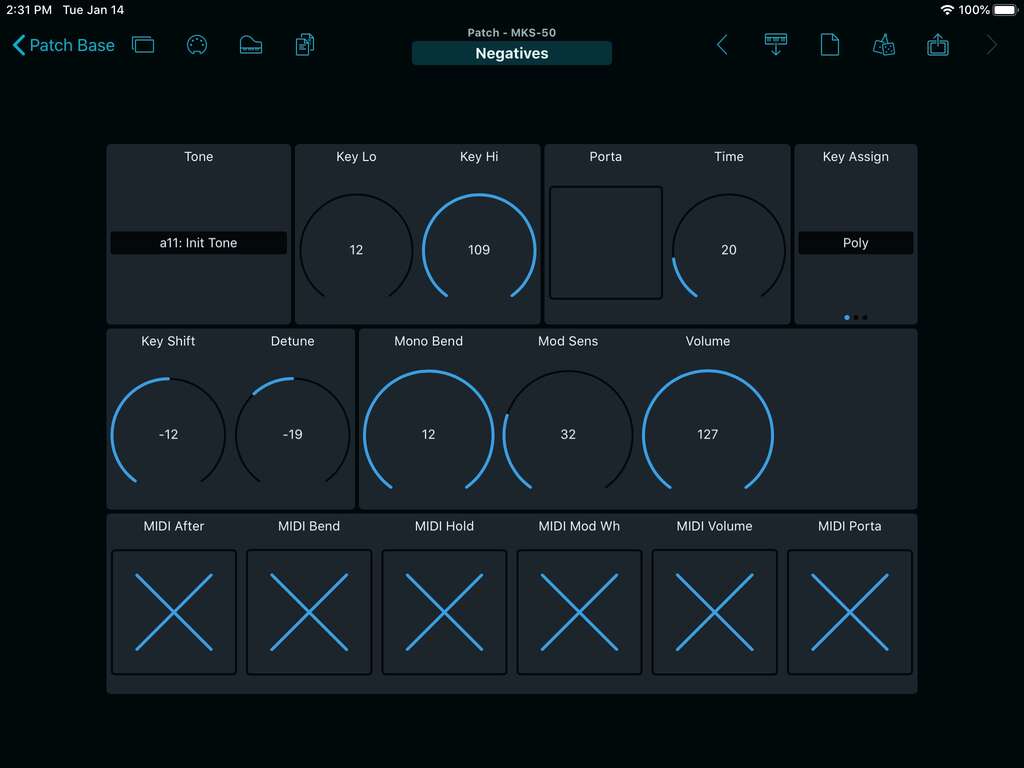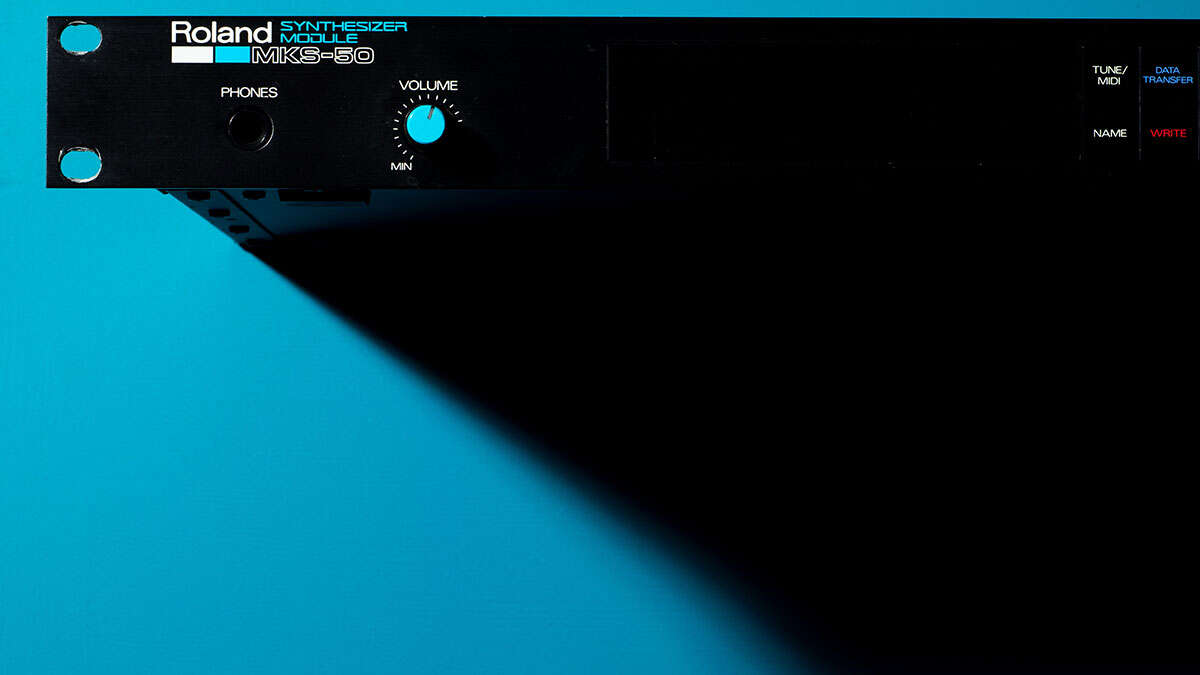Roland Alpha Juno-1, Alpha Juno-2, and MKS-50 Editors Now in Patch Base
by Chadwick Wood
January 17th, 2020
"Simple and classic" is how I would describe the Roland Alpha Junos. Like the Korg DW-8000, they don't have too many moving parts: your standard subtractive synth setup, and with only a single envelope and a single LFO. Not a lot of modulation capabilities. But the sound of the oscillators and the resonant low-pass filter give you a classic Roland sound, and the minimal parameters let you quickly explore a lot of different sonic spaces. You can get round and punchy basses, hollow leads, and soft pads all with ease. And everything sounds sweeter with the Chorus turned on; it's a Juno.

The MKS-50 (photographed above by Lauren Slusher) is the same inside as the Alpha Junos, but with a little more in terms of performance setups, utilizing the weird "Patch" structure that Roland also used in the D-110, which is like a precursor to the idea of "Performances". But that aside, you've got the same sound capabilities as the Alpha Juno keyboards.

Patch Base gives you quick and easy control over all of the sound parameters inside these synths; no menu-diving or wheel-jogging required.
Thanks again to Stefan George for lending me his Roland MKS-50 for development work, and Cody Johnson for his Roland HS-10 (an Alpha Juno-1 in different clothing).
